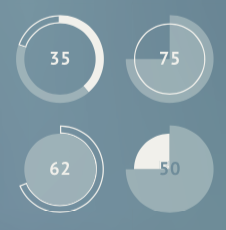11.21.2025
Sausage casings bulletin, November 21, 2025

...

In the coming weeks the EPA is poised to finally drop the much anticipated news of their revised, yet still provisional 2014 RVO. Just as important is the provisional 2015, 2016, and even as far forward as 2017 targets for the D4 category specifically. So, the market is positioning for the news to come. Gallons are being booked, feedstock is being purchased, and as expected, Argentine gallons are being pointed towards US ports in anticipation that the market is about to be turned on.
The EPA has only made nuanced remarks about the obvious strategy of using actual RIN generation figures for the 2014 target. They will contemplate some of the moving targets such as the 20%, one-off allowance of a carry over for Obligated Parties, as well as the known 80 plus million of exported gallons that beckon RIN retirement. Still most believe the number will be somewhere close to the NBB’s recommendation of the 1.7 billion and believe that the trade group has done a solid job in telling the story for this patient and tolerant market now poised to possibly step into the ‘heavy lifter’ category for the beleaguered EPA program.
Exactly what the curve will look like lies heavily upon the results of the hard work by the NBB, and as well as their task force of market leaders who have spent countless hours pleading the case of the Biomass Based Diesel category to the EPA directly. Explaining the nuances of some of the arbitrage possibilities that their decisions could open (such as the sugar cane ethanol arb and how that could impact the overall D5 category) thus maintaining the importance of giving the D4 category it’s own focused attention, appears to be one of the battles seemingly won across the past year. The other of course is the consideration of how the Argentina RIN generation pathways and the opening of this arb will affect the supply of RINs in the US market. Given the present BOHO spread (how it is oriented today), Argentina no longer has the greater, global gasoil pool to deliver their SME into, as was the case for most of last year when the spread was of a HOBO orientation. Given now the promise of a D4 RIN by the EPA, and the additional hope for a BTC to boot, Argentine producers are now excitedly anticipating the opportunity to find EPA soybean oil to point towards our US ports, unlocking the comparative value that awaits it.
Exactly how much oil is available for this arb is a point of heated debate, with the NBB naturally leaning towards the aggressive side of the spectrum.Others with the seeming ‘on the ground intel’ claim less is in play, but then again those in the know would not be well served in opening the truth of the matter to a wider audience. The key to all of this of course again is the trajectory by which the EPA has determined to build the forward curve of demand with their 2015, 2016, and now even 2017 targets. Seriously folks, are they really establishing a runway for this market that has tended towards working blindfolded for 2 years? Will it be 100 million increases per year, 250 million? How exactly will they skin this cat? In the end, it is all provisional accounts that will allow a little wiggle room for 2016 and 2017. These years could be fine tuned as more information becomes available, but at least 2014 gets cleared up and 2015 gets pegged. Be certain that whatever they do will attract all sorts of comments and debate, and likely a few flaming arrow lawsuits as well,
As interesting a question as the Argie arb is, many are now talking about US production–the availability of feedstock and how quickly US production will turn back on for the opportunity that may arise. Given the lack of real-time information available to the market exactly how many US biodiesel plants have continued to press amidst the very challenging conditions this year is unclear. Although Q1 production was relatively average, one should be reminded that most of that production would have been booked in Q4, perhaps even back to Q3 2014 when the spreads were very supportive of biodiesel production. Therefore Q2 appears to be where most would have been forced with the tougher question of whether to run or not in an environment where variable costs could barely be met without a ‘hail-mary’ play on a potential ‘BTC’ down the road. The April EMTS number will be telling as to what degree this market was able to press on amidst the rather daunting upfront economics available to it.
To suggest the market is now on its tippy toes is an understatement As one trader put it late today, you could slice the anticipation with a knife. Last minute positioning appears to be the theme of the day. Last-minute decisions on book structure position continue to unfold, based on the most educated guess driven by the exhausting analysis of the many moving pieces perhaps more accurately described as targets.
Will the wily Honey Badger devour this market and every OP in it’s path? Or will this ever so patient and tolerant ‘green fuel’ industry be disappointed once again by the very agency and administration that was meant to be supporting its growth? Now only time will tell, and whether it a matter of days or still weeks, the news that is coming will likely make or break many who have toiled with this clumsy market for better or for worse.